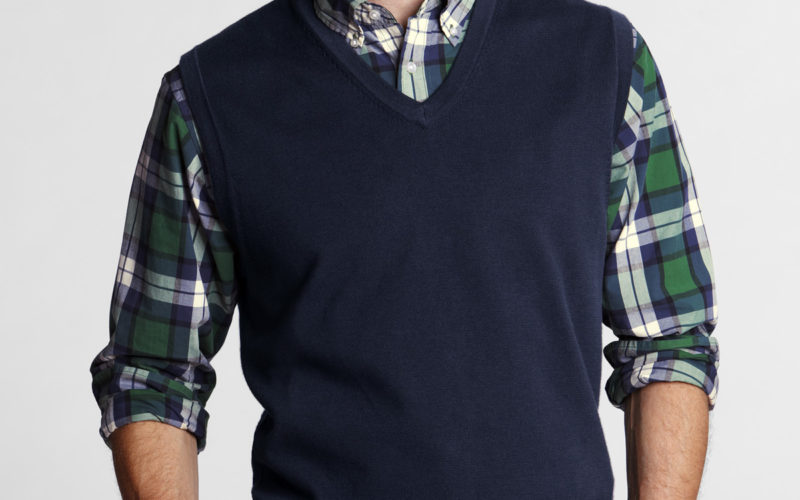Q. Either the daily weather changes more than it used to or I have become more sensitive. Whatever the reason, I find myself switching from feeling too hot to too cold and have started following your “layering” advice. The problem is I’m not sure what can go under what. I know I can wear a dress shirt under a sweater, but can I wear a polo, short sleeves, or T? And what should show out the top?
A. Yes, wearing a dress shirt under a sweater is fine if it’s not bunched up and stays smooth. I always have been a proponent of layering, and it is not a particularly hard variety of dressing to master. That said, I can provide some tips, and some dos and don’ts. As with most of men’s dressing, layering can range from very casual to suit-and-tie dressing.
I would not suggest wearing a chunky vest or a bulky sweater with a suit. Perhaps a light sweater vest if the setting is less professional and the suit you’re wearing is not too dressy, such as a pinstripe. If you want to wear a sweater with something close to a suit for more traditional casual-business or dinner-out layering, I suggest a navy blazer or a wool tweed sports jacket with contrasting dress trousers rather than a matched suit. Blazers and sport jackets make perfect top layers in more-casual, less-business environments; they are warm and have a nice look. Though in this sort of setting either one will work, a solid dark blazer is dressier than a patterned sports jacket.
Even more casual is a fleece vest or a quarter-zip as a top layer. One of the most versatile layering items a man can wear, fleece goes over all types of shirts. It can be a quiet color or a bold shade that adds a bright note to your combination. And it can pair with any pants from jeans to dress trousers.
Returning to your questions about which shirts to wear as under layers . . . as you suggest, men do have a range of choices for what to wear under the jacket. A straight-point collar or a button-down collar dress shirt under a sweater is very common. (In the clothing industry these smooth dress-shirt fabrics are known as “wovens,” as opposed to “knits.”) Less appropriate and not accepted in “correct” social circles, is wearing a casual knit shirt (Tee, polo, or henley) with a tailored jacket. One exception is a turtleneck; it can be worn alone, under a jacket, or under an open-at-the-neck button-down woven shirt. However, adding a triple layer of, say, turtleneck, shirt, then sweater (or even quadruple with an undershirt below), is more than a bit much unless you are out in subzero weather.
In all cases, the shirt collar should show above the top of the sweater (but be sure the collar’s pointsremain under the sweater’s neckline). This applies to every type of sweater from vest to pullover to cardigan. Whether or not to wear a short-sleeve shirt is up to you. Since no one sees the sleeves, you can go with your preference. And the same is true for keeping warm in extra cold weather by layering it all over a cozy cotton, silk, or wool undershirt.
While shirt collars should be seen, visible shirt tails are at the top of the don’ts list. In my opinion, the “untucked” dress shirt look is for teens and slovenly-looking adults. Finally, mistakes to avoid with layering include:
- textures that do not seem logical together because one is very casual and bulky while another is dressy, smooth, and silky;
- too-many patterns;
- message shirts of any kind in the mix.
Combined right, you will be ready for an arctic blast or an overheated restaurant, while looking stylish . . . although you should remove any pullover sweaters in the privacy of the men’s room so you can check your hair . . . and also to avoid flashing your belly!
Please send your men’s dress and grooming questions and comments to MALE CALL: Lois.Fenton@prodigy.net









